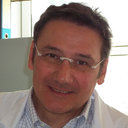Short- and long- term effects of cigarette smoke exposure on glutathione homeostasis in human bronchial epithelial cells.
Atslēgvārdi
Abstrakts
BACKGROUND
Cigarette smoke extract (CSE), a model for studying the effects of tobacco smoke in vivo and in vitro, induces cell oxidative stress and affects the antioxidative glutathione system. We evaluated the impact of CSE on airway epithelial cells and the possible cytoprotective effect of the mucolitic drug S-carboximethilcysteine lysine salt (S-CMC-Lys).
METHODS
Reduced glutathione (GSH) and reactive oxygen species (ROS) intracellular levels were evaluated by fluorimetry in human bronchial epithelial cells (16-HBE) and the expression and activity of enzymes of the GSH metabolic pathway were investigated by RT-PCR, Western blot and colorimetric assays.
RESULTS
CSE significantly increased cell mortality in a time and dose dependent manner, via an apoptosis-independent pathway. Short-term (3 hours) CSE exposure induced an increase in ROS levels and a GSH intracellular concentration drop. In parallel, the expression of glutathione peroxidases 2 and 3, glutathione reductase and glutamate-cysteine-ligase was increased. S-CMC-Lys was effective in counteracting these effects.
CONCLUSIONS
CSE affects ROS levels, GSH concentration and GSH enzymes pathway. These effects can be to some extent reversed by S-CMC-Lys, that could represent a therapeutic tool to counteract CSE induced oxidative cellular injuries.


